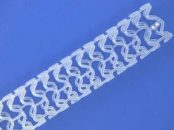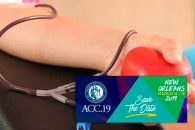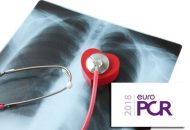For patients with ST-segment elevation acute myocardial infarction and multivessel disease beyond the culprit artery, complete revascularization is superior to culprit-only treatment as regards the final endpoint, a composite of cardiovascular death, infarction, and ischemia-driven revascularization over a mean follow-up of 3 years. This information derives from long-awaited randomized study COMPLETE, finally presented at the…
ESC 2019 | CONDI-2ERIC-PPCI: Final Blow Against Ischemic Pre-Conditioning in Primary Angioplasty
Remote ischemic conditioning does not offer any clinical benefit to patients with ST-segment elevation acute myocardial infarction undergoing primary angioplasty, according to this study presented on Sunday at the European Society of Cardiology Congress 2019. Prior studies were limited and small, but this analysis seems to provide definitive evidence with regard to ischemic pre-conditioning. The…
DES with Bioresorbable Polymer vs. Bare Metal Stents in Primary PCI
Long after myocardial revascularization guidelines had established no medical reason justifies the use of bare metal stents (BMS), along comes this study to refresh the old trials comparing drug eluting vs bare metal stents in the context of primary PCI. The problem for many countries is that primary PCI obviously occurs in the context of…
ACC 2019 | SAFARI: Unexpectedly, Radial Approach Offers No Benefits In STEMI
This study was not able to show benefits in terms of mortality or bleeding when using radial vs. femoral approach in patients undergoing ST elevation myocardial Infarction. This small trial does not change things for “radialists” way past their learning curve who already feel confident with this technique. For them, there is no way back.…
Direct Stenting vs. Conventional Angioplasty and Their Interaction with Thrombus Aspiration
The rates of direct stenting are higher among patients randomized to thrombus aspiration. The rates of clinical events and myocardial reperfusion did not differ significantly between a direct stenting strategy vs. predilation and stenting, and no interaction was observed as regards thrombus aspiration. Several preliminary studies have emerged from the hypothesis that a direct stenting…
ESC 2018 | MATRIX: 1-Year Superiority of Transradial Access
Transradial access should be the access of choice in patients with acute coronary syndrome, while bivalirudin has not shown any benefit for this population. The long-term follow-up from the MATRIX (Minimizing Adverse Hemorrhagic Events by Transradial Access Site and Systemic Implementation of Angiox) trial confirms the results at 30 days: transradial access is here to stay…
EuroPCR 2018 | TRANSIENT trial: What is the best timing for TRANSIENT STEMI revascularization?
The objective of this study was to determine the best time to revascularize a patient who is undergoing an acute coronary syndrome (ACS) with transient ST segment elevation. This population hovers around 15% of STEMI patients. The question is whether to reduce infarction area (or potential reinfarction) with an immediate intervention, or to delay intervention…
EuroPCR 2018 | OxAMI-PICSO: Coronary Sinus Occlusion, Improving Microvascular Function and Reducing Infarct Size
The index of microcirculatory resistance might guide therapy and controlled intermittent coronary sinus occlusions, improve microvascular function, and reduce infarct size. This study included patients with prior ST-segment elevation myocardial infarction treated with primary angioplasty. Researchers measured the index of microcirculatory resistance before stenting and intermittent coronary sinus occlusion was used if the result was…
EuroPCR 2018 | SEMPER-FI: The Reemergence of the Intra-Aortic Balloon Counterpulsation
The intra-aortic balloon counterpulsation affects patients through a combination of coronary flow improvement and afterload reduction. It has been the subject matter of several studies, but its benefit as mechanical support has not been proven. This work aims to prove the benefits of balloon counterpulsation in patients with ST-segment elevation acute myocardial infarction who, after…
EuroPCR 2018 | LEADERS FREE: Complex Angioplasty in Patients with High Risk for Bleeding
The LEADERS FREE study showed that a biolimus A9-coated polymer-free stent was superior to a conventional stent in terms of safety and efficacy in patients who received dual antiplatelet therapy for only a month due to their high risk for bleeding. In this substudy, researchers analyzed 667 patients enrolled in the original LEADERS FREE trial who met certain requirements…









